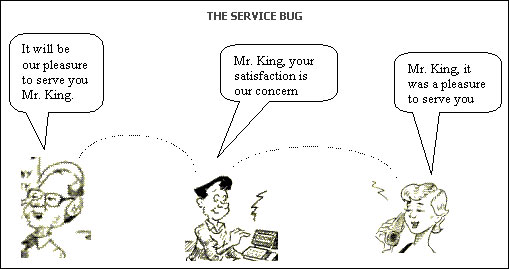Please wait...
 There was this marketing manager in a particular company who had the
habit of having a green apple around 5 in the evening everyday. After a
while it was observed that the assistant manager also started to bite
into a green apple around the same time. On closer observation the
assistant wore the same brand of trousers and of a similar design as his
boss.
There was this marketing manager in a particular company who had the
habit of having a green apple around 5 in the evening everyday. After a
while it was observed that the assistant manager also started to bite
into a green apple around the same time. On closer observation the
assistant wore the same brand of trousers and of a similar design as his
boss.
It is a natural phenomenon to emulate your superior, as he is believed to be always a step ahead of all in the department or organisation. He is supposed to be the trendsetter. Whether it has to do with the way he operates, his habits, mannerism, communication, how he conducts himself, his way of life, you name it and he is always observed and often emulated. Irrespective of the kind or size of an organisation the phenomenon exists.
In an organisation or a department, as in a home we see employees thinking and performing in a uniform manner and displaying certain common traits. This is because people working in a department, branch or area, develop a set pattern in their thinking process. Their reflexes and responses are a reflection of the department or company's way of working. It is something that rubs on from one to the other. It could be your boss or even from peer group.
A scenario thus would give the ideal opportunity to spread a customer service philosophy amongst employees. This however has to be initiated at the helm in any organisation. For, only when the CEO thinks, walks, talks, acts customer focus can he steer his team of deputies to do similar. When the general manager and department managers in turn think, walk, talk, act customer focus, the supervisors do similar. When supervisors think and perform totally focused on customers then front line operate in accordance. When you have a whole organisation buzzing customer service, you have a customer-focused setup.
It is not necessary that one has to officially inaugurate a customer service program or kick off with much fan and fancy. Many organisations might not even have processes and procedures in customer service. They have a way of doing business that just happens to be customer friendly. But if a chief executive or owner has a clear business objective and a customer service strategy he could very easily find the means to achieve it such that it benefits his company and himself. All he needs to do is practice diligently on his service strategy and achieve his service objective. Make sure he transmits constructive and positive messages, always alert and most importantly focused on customers. In time his behaviour and actions are emulated in part or full by people working with him. Should he come to the reception of his office to greet or send off a customer, his deputies, in time would be inclined to emulate similar gestures. Should the manager address all his customers by name it would slowly but surely percolate down to front line to address their customers by name. Should the general manager answer internal or external calls professionally he will set the standard for others in the organisation.

Such practice of customer service acts as a catalyst in inculcating customer focus in managers and subordinates. Observation and contemplation will educate them on the company's philosophy. Observation will help them emulate. Contemplation will help them excel. 'If the boss can roll up his sleeve to ensure customer satisfaction, so should I'. The bottom line is to see satisfied customers. Such scenarios are not only encouraging but also give impetus to the exercise of 'watch and improve'.
If the customer service bug passes from managers to supervisors to frontline we see an organisation delirious about customer satisfaction.
While this normally has to spread from top, once kicked off and the bug set in motion you might experience it traveling laterally as well amongst employees in a department, between managers, amongst frontline. Other than only looking up, one can also look around for improvement.
Bob was bitten by the service bug. He was always excited and enthusiastic while handling customers. Though it was all a result of watching his manager, he had his own creative ways in making it better. This won him appreciation from customers and recognition from his company. His colleague Anita was also service conscious with a lot of experience but she always looked up to Bob and wanted to do better. She hence watched Bob's manner of handling customers, modified it to her operations and realised that it was getting her better results. 'If Bob can do, so can I'. Soon she was drawing equal attention from customers and peers.
You could work elaborate service strategies in consultation with gurus in the field and spend a lot of time and money to instil customer focus in the organisation. Though highly motivating, they act as external influencers preaching customer service. The effects of such workshops normally wear after a while. These effects unless practiced constantly could only be revived with refresher courses or with the next employer. Hence, the best way to keep the service bug contagious is to practice diligently from the top to the bottom, the art of handling customers and ensuring satisfaction. It is all about 'watch and improve'. After all it benefits the customer, the employee and the company alike.
BackSorry No Comments found for this article